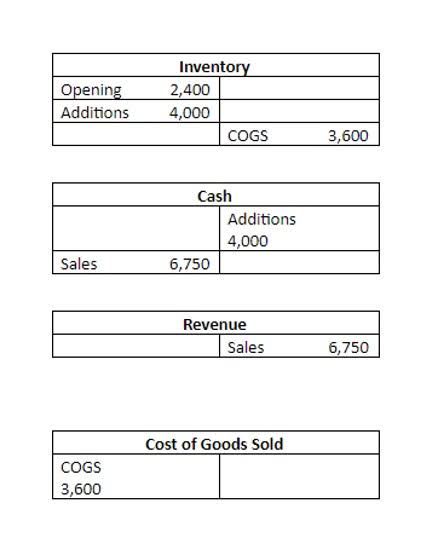Clays also undergo settlement when dewatered (groundwater pumping) because the effective stress on the clay increases. This consolidation saves investors time and energy as it
Unconsolidated and semiconsolidated sand and gravel aquifers U S. Geological Survey

Clays also undergo settlement when dewatered (groundwater pumping) because the effective stress on the clay increases. This consolidation saves investors time and energy as it gives them granular insight into the firm’s financial performance without requiring separate readings of each subsidiary’s report. But for investor relation purposes, it creates one combined financial statement periodically instead of publishing stand-alone reports for individual entities. This means that though Alphabet owns many subsidiaries, only the first two—Google Services and Google Cloud—are significant enough to report on individually. The rest are included in the consolidated statement but lumped together into one broad category—Other Bets—due to their minimal bottom-line impact. As an example, let’s say that Company ABC has a 40% controlling interest in its unconsolidated subsidiary, Business XYZ, which it created as an SPV for a new construction project in a foreign country that will only last for a year.
- But for investor relation purposes, it creates one combined financial statement periodically instead of publishing stand-alone reports for individual entities.
- This is the case for most types of sand and clay with low amounts of organic material.
- The cost and equity methods are two additional ways companies may account for ownership interests in their financial reporting.
- The IFRS allows exceptions for independently-operated subsidiaries and those held for sale (branches with minimal financial impact on the parent company which it intends to sell).
- Results from triaxial tests are used in almost every aspect of geotechnical engineering, from slope stabilisation analysis, to pavement design, tunnelling and bearing capacity calculations in temporary works and foundation design.
Groundwater Movement.

The consolidated financial statements consist of the income statement, Statement of Financial Position, Statement of Cash Flow, and Statement of Change in Equity. It provides information about income, expense, asset, liability and equity of the parent and subsidiary in a set single report. Typical transactions that appear on stand-alone statements but not on consolidated statements include equity investments, sales and loans. When a parent owns stock in a subsidiary, the stock appears as an asset on the parent’s stand-alone balance sheet but as equity on the subsidiary’s sheet.
- Subscription legal databases like Lexis, Westlaw, Bloomberg Law, and Fastcase (all available at Jenkins), can also be used to search both the consolidated and unconsolidated statutes.
- He has contributed to USA Today, The Des Moines Register and Better Homes and Gardens »publications. Merritt has a journalism degree from Drake University and is pursuing an MBA from the University of Iowa.
- But there will be a 35% stake of investment (the amount would be similar) in the assets section.
- The consolidation of financial statements integrates and combines a company’s financial accounting functions to create statements that show results in standard balance sheet, income statement, and cash flow statement reporting.
- The ratio of the maximum overburden pressure it has experienced in the past and the current overburden pressure is known as the ‘overconsolidation ratio’ (OCR).
Your Local Distributor

My background includes being a Chartered Accountant, affiliated with the Institute of Chartered Accountants of Pakistan, and holding a Bachelor of Accounting Honors from Asia e University, Malaysia. I have applied these qualifications in consolidated vs unconsolidated real-world scenarios, providing me with a deep understanding of financial reporting concepts and their practical applications. Failing to fully cancel intra-group transactions, like a parent company lending funds to a subsidiary, can lead to a misleading balance sheet. Prevent this scenario and create accurate reports by using financial software to identify and remove duplicate entries. Consolidated financial statements show the combined financial picture of a parent company and its subsidiaries—basically treating them as one big company on paper.
Choosing to Use Consolidated Financial Statements

If the subsidiary is not wholly owned – that is, if another investor or company holds a minority stake – then that non-controlling interest must be accounted for on the consolidated balance sheet. Non-controlling interest appears on the balance sheet as a separate category under stockholders’ equity. There are online bookkeeping primarily three ways to report ownership interest between companies. The cost and equity methods are two additional ways companies may account for ownership interests in their financial reporting. The consolidation of financial statements integrates and combines a company’s financial accounting functions to create statements that show results in standard balance sheet, income statement, and cash flow statement reporting.

- Jenkins also has access to this title in print as well as on the member database HeinOnline.
- Moreover, the company will also consolidate if the subsidiary is under their control even ownership is less than 50%.
- Non-controlling interest appears on the balance sheet as a separate category under stockholders’ equity.
- David is comprehensively experienced in many facets of financial and legal research and publishing.
- In Consolidated Undrained (CU) and Consolidated Drained (CD) triaxial shear tests, the sample is saturated before testing begins and excess pore pressure dissipation during consolidation to reach equilibrium conditions is allowed.
- Once you’ve removed all intra-group dealings and accounted for gains and losses, it’s time to combine and consolidate.
If you are trying to compare different companies from the same sector, then standalone statements can be a better idea. If you are analyzing a company that has subsidiaries in a similar line of business, then make sure that you look at consolidated statements. The concept Consolidated Vs Unconsolidated Financial Statements is essential for understanding the Financial Position, Performance, and Cash Flows of a company. Understanding the differences between these two types of financial statements is CRUICAL for making informed financial decisions. ABC must record $400 million in earnings on its income statement since ABC has a 40% stake and exerts some control over XYZ. Bookstime Also, ABC needs to record the increase in the value of the initial investment, listed on the balance sheet, by $400 million.

Select years of this publication are available online from the Pennsylvania Legislative Reference Bureau. Jenkins also has access to this title in print as well as on the member database HeinOnline. Basin-fill or valley-fill aquifers were deposited in depressions formed by faulting or erosion or both. Fine-grained deposits of silt and clay form local confining units in these aquifers, and thick sequences of the unconsolidated deposits become more compact and less permeable with depth. Most basins are bounded by low-permeability rocks, but some in the western United States are hydraulically connected to adjacent carbonate-rock aquifers.
- It provides information about income, expense, asset, liability and equity of the parent and subsidiary in a set single report.
- Likewise, the thick blanket sands of the High Plains aquifer and the Mississippi River Valley alluvial aquifer of the central United States have regional flow systems.
- It also converts all its foreign currency income to USD and ensures reporting period uniformity.
- Private companies have very few requirements for financial statement reporting, but public companies must report financials in line with GAAP.
- For accuracy, exclude all records of this transaction from the consolidated dataset.
Principal aquifers of the United States
The numerous local aquifers can be grouped into several regional aquifer systems that contain groundwater-flow systems of local, intermediate, and regional scale. Water in topographically high recharge areas is unconfined, but, it becomes confined as it moves coastward. Discharge is by upward leakage to shallower aquifers or to saltwater bodies in coastal areas. Because flow is sluggish near the ends of regional flow paths, the aquifers commonly contain unflushed saline water in their deeply buried, downdip parts.
